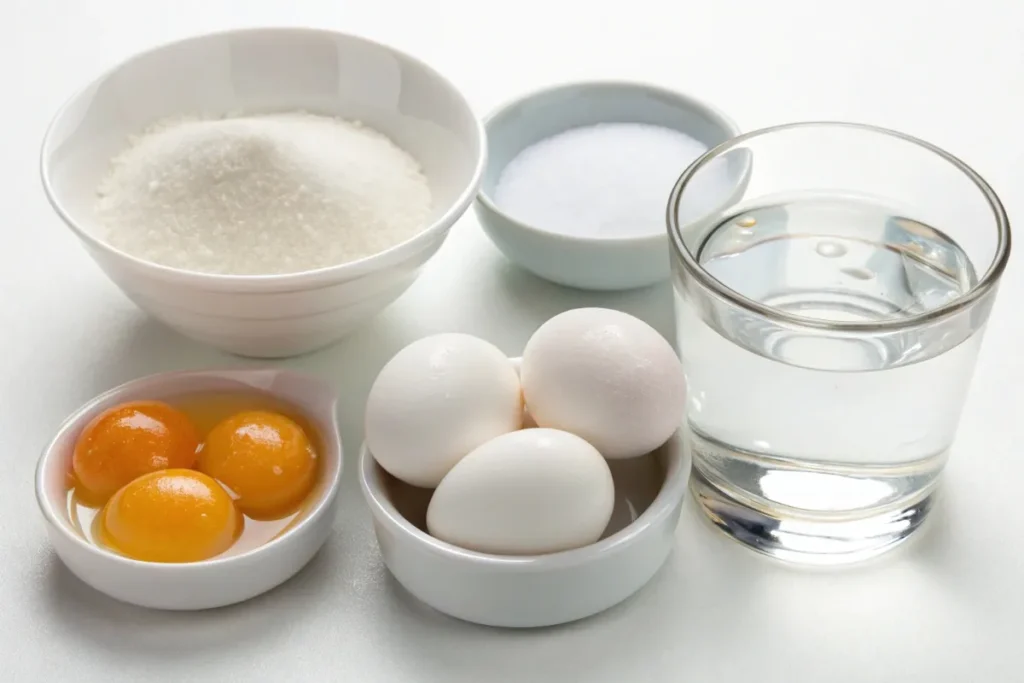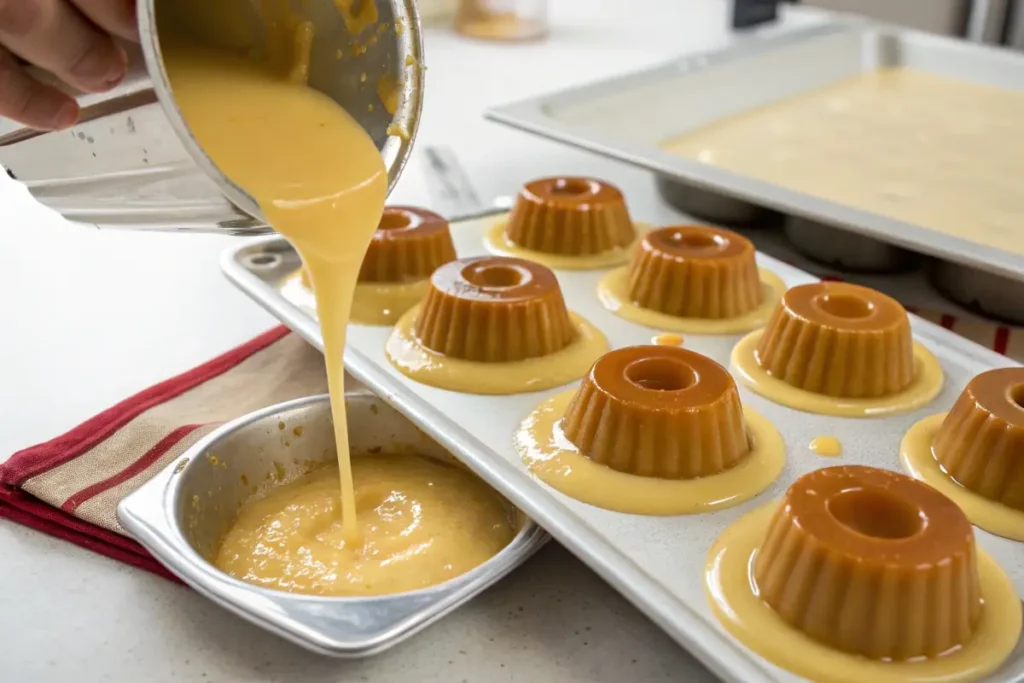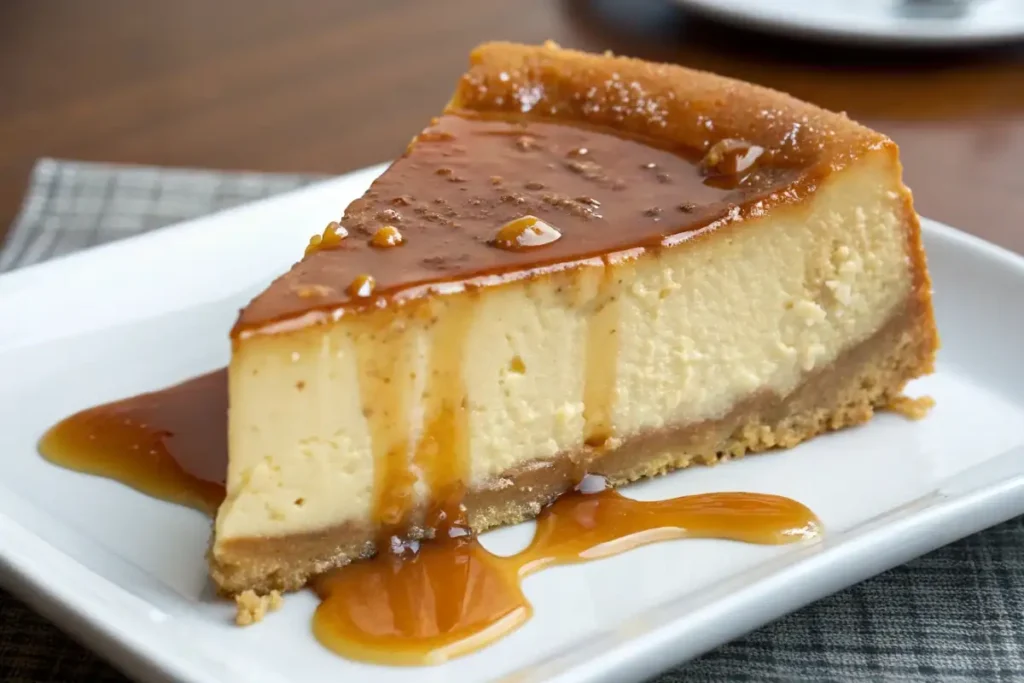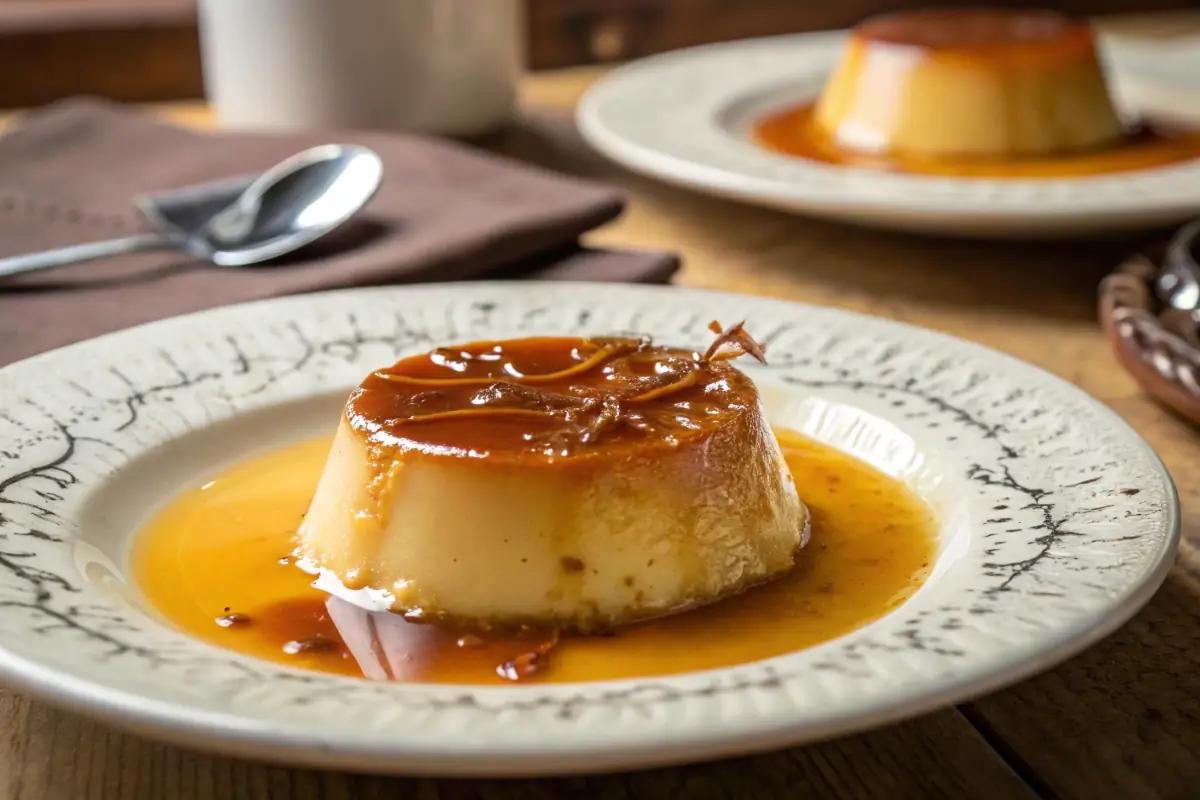Discover the sweet secrets of Tocino de Cielo. Learn its origins, recipe, and tips for flawless results in this comprehensive guide.
Table of Contents
Understanding Tocino de Cielo
Tocino de Cielo stands as one of Spain’s most treasured custard desserts. It shares roots with flan but boasts a distinct identity. Generally, people associate this exquisite treat with delicate caramel and a smooth, velvety base. Yet Tocino de Cielo goes beyond mere sweetness. It embodies cultural traditions passed down from Spanish monasteries and local sugar refineries.
Comparatively, other custard-based sweets often rely on whole eggs. However, Tocino de Cielo uses only yolks, creating a brilliantly rich color and a luxurious texture. Consequently, every bite feels decadent. Furthermore, the straightforward list of ingredients highlights the dessert’s pure flavors. Undoubtedly, it has gained a special place in many kitchens and patisseries.
Origins of Tocino de Cielo
Early references to Tocino de Cielo trace back centuries, specifically to convents in Jerez de la Frontera. Nuns would use leftover egg yolks donated by local wineries, as wineries commonly used egg whites to clarify wine. Eventually, these yolks found their way into sugary creations. Tocino de Cielo was born from resourcefulness and reverence for simple components.
Eventually, this Spanish delight spread across the country. Chiefly, travel and trade routes enabled the dessert’s expansion. Artisans and home cooks alike put their own spin on it. Nevertheless, the essential hallmark—creamy egg yolk layered with caramel—remains unchanged.
The Legacy of This Heavenly Custard
The phrase “Bacon from Heaven” might seem puzzling. However, the name Tocino de Cielo refers to its translucent, slightly fatty-looking surface. It glistens under soft light, resembling the savory sheen of bacon. Comparatively, its texture is firmer than a typical flan. Yet it retains a melt-in-your-mouth tenderness that dessert lovers crave.
Historically, sugar refineries found themselves with excess sugar that needed creative outlets. Thus, dessert evolution thrived in regions like Andalusia. Monastic communities played a major role in refining these recipes. Particularly, the focus on using minimal ingredients with maximum flavor left a deep cultural imprint.
How to Prepare Tocino de Cielo
While Tocino de Cielo may look complicated, it is surprisingly simple. Essentially, it requires egg yolks, sugar, water, and time. The success, however, hinges on precision and patience. First, you must create a sugar syrup. Then, you carefully blend it with the egg yolks. Finally, you pour everything into a caramel-lined mold.
Many people use the bain-marie (water bath) method to ensure even cooking. This technique minimizes direct heat exposure and prevents scorching. Equally important, you must strain the mixture before baking or steaming. Doing so removes any unwanted bubbles or egg strands. The result is an ultra-smooth, velvety custard that embodies the essence of Spanish dessert-making.
Essential Steps to Perfect Tocino de Cielo
- Gather Ingredients
- 6 large egg yolks
- 1 cup granulated sugar
- 1 cup water
- Caramel (homemade or store-bought)
- Prepare the Sugar Syrup
- Combine sugar and water in a saucepan.
- Heat gently until sugar dissolves, stirring occasionally.
- Increase heat to medium.
- Let the mixture simmer until it reaches a slightly thick syrup.
- Allow it to cool briefly.
- Mix Egg Yolks and Syrup
- Whisk egg yolks in a separate bowl.
- Gradually pour in the syrup while stirring.
- Continue whisking until fully integrated.
- Caramelize the Mold
- Pour caramel into your chosen mold or ramekins.
- Tilt to coat the bottom evenly.
- Strain and Bake
- Strain the egg-syrup mixture into the mold.
- Place the mold in a larger baking dish.
- Fill the dish with water halfway up the mold’s sides.
- Bake at 325°F (160°C) for 25–30 minutes, or until set.
- Cool and Serve
- Let the dessert rest until it reaches room temperature.
- Refrigerate for at least two hours.
- Invert onto a plate, letting the caramel drip over the custard.
These steps illustrate how easily you can master Tocino de Cielo. Nevertheless, pay close attention to each step. Even a minor oversight can affect the texture.
Regional Variations of Tocino de Cielo
Given Spain’s diverse culinary regions, it’s no surprise that Tocino de Cielo has multiple variations. Although the foundational elements seldom change—egg yolks, sugar, and caramel—some localities infuse subtle differences. For instance, in certain parts of Andalusia, people add a hint of citrus zest. Conversely, others might use a cinnamon-infused syrup.
Occasionally, you might encounter recipes that include additional flavors, like vanilla. Meanwhile, some chefs experiment with floral essences or liqueurs to add complexity. Altogether, these adaptations showcase the dessert’s versatility. Tocino de Cielo can be a canvas for creative bakers who wish to put a unique spin on tradition.
Pairing Tocino de Cielo with Spanish Cuisine
The delicate sweetness of this Spanish dessert pairs brilliantly with strong coffee. Additionally, it complements many traditional tapas if served as a finish to a meal. Comparatively, dessert wine or sherry can also elevate Tocino de Cielo. The creamy texture stands up well against the sharp notes of fortified wines.
For festive gatherings, present Tocino de Cielo in individual ramekins. Serve alongside fresh fruit or a small dollop of whipped cream. Doing so ensures your guests appreciate both the traditional form and a subtle garnish. Undoubtedly, it transforms ordinary meals into memorable feasts.
Ingredients and Equipment

Cooking Tocino de Cielo begins with top-quality egg yolks. Fresh eggs yield a more vibrant color and robust taste. Beyond that, granulated sugar and water form the base for the syrup. While straightforward, the process demands careful temperature control. A kitchen thermometer comes in handy, although a keen eye can suffice.
Essential items:
- Ramekins or a single mold
- Whisk
- Fine-mesh strainer
- Large baking dish for the water bath
- Saucepan for syrup
If you lack certain tools, improvise. For example, a simple pot can replace a fancy saucepan. However, avoid using pots that scorch easily. Consequently, your sugar might burn and ruin the entire mixture.
Possible Substitutes and Tips

- Sugar Alternatives: Some cooks opt for honey or agave syrup for nuanced flavors. However, the cooking temperature and consistency may vary.
- Flavored Syrups: Citrus-infused sugar syrups add a bright note. Basically, drop in a thin lemon or orange peel while simmering the syrup.
- Egg White Usage: Save the whites for other dishes like meringues. Consequently, you reduce waste and make multiple desserts at once.
Storage and Serving Suggestions
Tocino de Cielo tastes best when chilled. Ideally, let it rest in the fridge for a few hours or overnight. That extra time helps the dessert firm up. Eventually, the flavors meld more harmoniously. Place it in an airtight container or wrap it with plastic film. Doing so prevents unwanted odors or moisture from compromising its texture.
When it’s time to serve, gently run a knife around the edges of the mold. Then flip it onto a serving plate. The caramel glides down the sides in a glossy cascade. Some garnish ideas include:
- Fresh berries
- Mint leaves
- A dusting of powdered sugar
- Thin slices of fruit
Pair your dessert with a cup of espresso or a glass of sweet wine. Comparatively, these beverages cut through the richness. Everyone will find the final combination irresistible.
Common Mistakes to Avoid

People often overcomplicate Tocino de Cielo. In reality, simplicity is key. Chiefly, do not rush the sugar syrup. Undercooked syrup creates a runny filling. Conversely, overcooked syrup leads to a thick, overly stiff custard.
Another pitfall is failing to monitor oven temperature. Egg-based desserts are sensitive to heat. Consequently, a small difference in temperature can alter the outcome. If your oven runs hot, reduce the set temperature by a few degrees. Furthermore, always check the dessert’s center using a toothpick or skewer. It should come out mostly clean or with very fine crumbs.
Lastly, avoid skipping the straining step. Bits of egg or foam can compromise the velvety consistency. Likewise, do not skimp on the cooling period. The custard needs time to set fully, ensuring perfect slices.
Health and Nutrition
Admittedly, Tocino de Cielo is no low-calorie treat. However, it can fit into a balanced diet when enjoyed in moderation. Each serving packs protein from the egg yolks, plus a sizable dose of sugar. Consequently, portion control is key. Individuals mindful of sugar intake might adapt the recipe or enjoy a smaller slice.
For those seeking lighter variations, consider these modifications:
- Use fewer egg yolks and incorporate one or two whole eggs.
- Substitute part of the sugar with a lower-glycemic sweetener.
- Pair your dessert with fresh berries to balance sugar levels.
While these changes alter the taste slightly, they preserve much of Tocino de Cielo’s essence. Above all, savor it as an occasional indulgence rather than a daily staple.
Frequently Asked Questions (FAQ)
Why is it called Tocino del Cielo?
Many believe the name “Tocino del Cielo,” or “Bacon from Heaven,” stems from its glossy, fatty-looking surface. The caramel-coated top glistens like bacon. In addition, the dessert’s rich taste felt heavenly to those who enjoyed it in the past.
What is Tocino de Cielo made of?
This Spanish custard dessert primarily consists of egg yolks, sugar, and water. The sugar and water form a syrup, which is carefully mixed with the yolks. Afterward, the mixture is baked in a caramel-lined mold to create a delicate, silky treat.
Conclusion
Tocino de Cielo captivates dessert lovers with its smooth texture and sweet simplicity. Indeed, a few well-chosen ingredients combine to form a memorable Spanish delicacy. From its monastic origins to modern-day adaptations, this dessert bridges culinary history and innovation. Whether you follow the classic route or add a twist of your own, Tocino de Cielo always satisfies those who seek a heavenly treat.
Indulge in its caramel-topped surface and creamy interior. Meanwhile, pay homage to the traditions that gave birth to this unique dessert. Tocino de Cielo is more than a recipe. It is a testament to resourcefulness, taste, and the unending search for culinary perfection.
Suggested Internal Links
- https://iamarecipes.com/cinnamon-rolls-cheesecake-recipe/
- https://iamarecipes.com/why-did-my-coconut-cream-pie-not-set-up/
- https://iamarecipes.com/how-to-caramelize-brulee-perfect-creme-brulee-every-time/
- https://iamarecipes.com/whats-the-difference-between-creme-brulee-and-custard/

